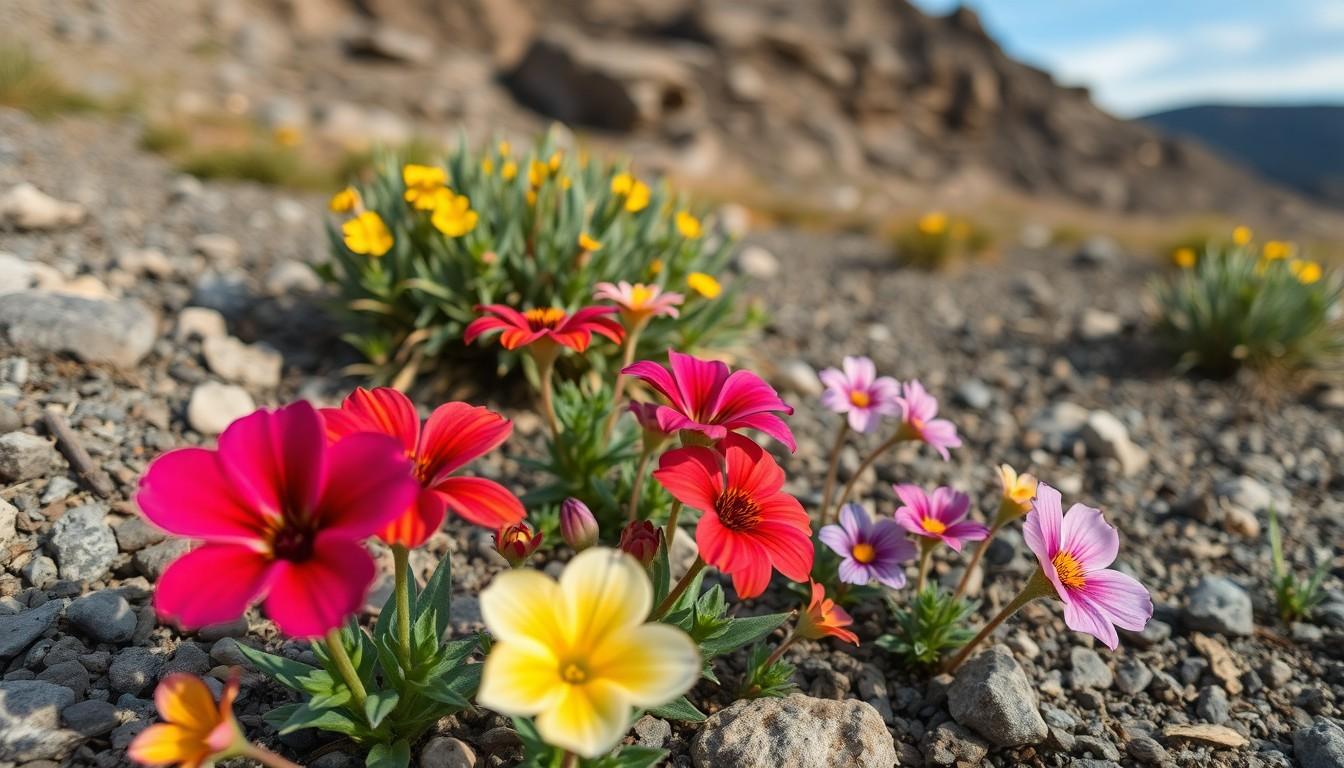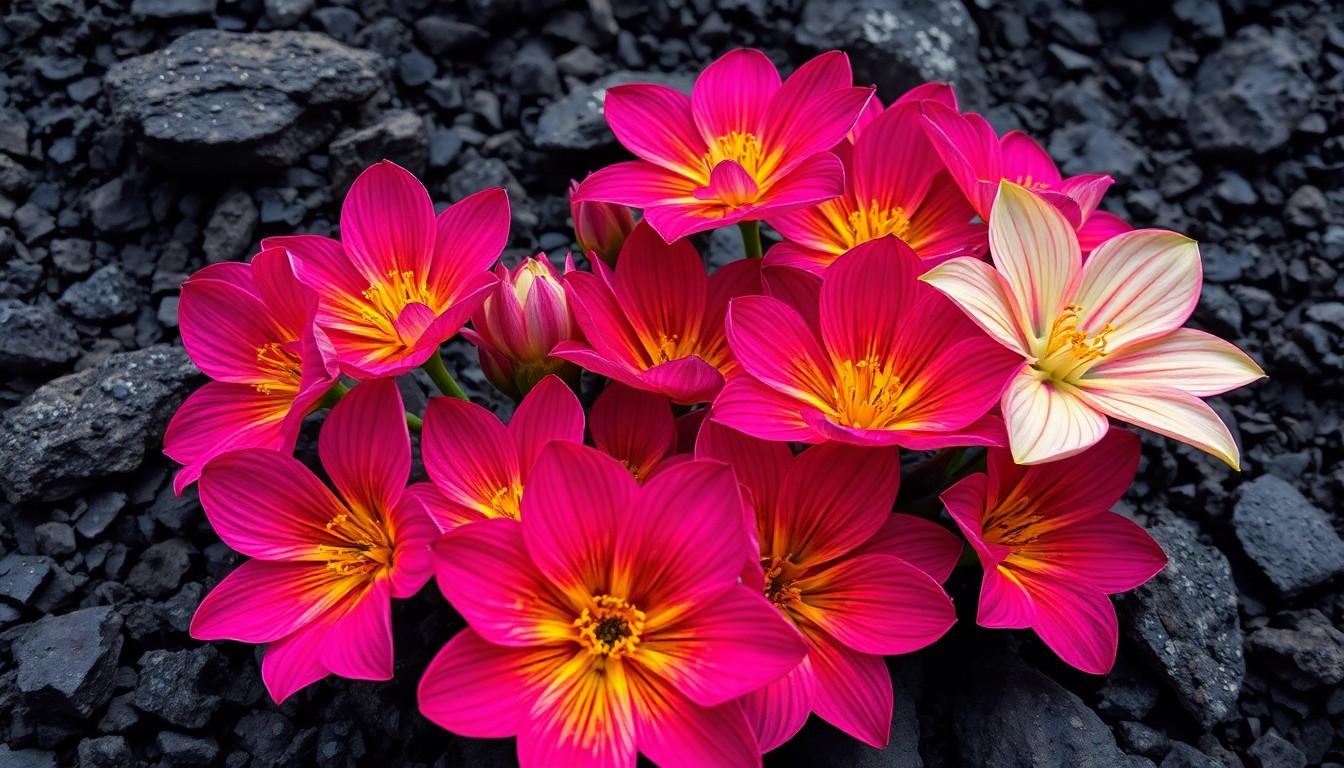In a world where beauty and horror intertwine, “flowers of flesh and blood” captures the imagination like few other concepts. These intriguing blooms challenge the norms of nature, blurring the lines between the delicate and the grotesque. Imagine petals that pulse with life, each one a testament to survival in the harshest of environments. It’s not just a poetic phrase; it’s a wild exploration of the extraordinary.
Dive into this captivating realm where art meets biology, and discover how these fascinating creations reflect deeper themes of existence. From their striking appearances to their symbolic meanings, flowers of flesh and blood invite us to rethink what beauty truly means. So, buckle up for a journey that’s equal parts enchanting and unsettling; it’s sure to tickle your curiosity and leave you pondering the wild wonders of nature.
Overview of Flowers of Flesh and Blood
“Flowers of flesh and blood” embody a compelling fusion of allure and dread in nature. These distinctive plants thrive in extreme environments, displaying vivid colors and unique forms that captivate onlookers. Their petals often appear alive, pulsating with a vitality that starkly contrasts their harsh surroundings.
Exemplifying beauty within adversity, these flowers challenge conventional ideals of attractiveness. Many species feature intricate details, revealing textures and colors that prompt deeper reflection on life’s complexities. Their existence signifies resilience, thriving despite environmental challenges typical of their habitats.
Symbolically, these blooms represent the delicate balance between life and death. They evoke thoughts of mortality while simultaneously showcasing nature’s unwavering ability to flourish. This duality encourages a fresh interpretation of beauty, pushing boundaries beyond superficial aesthetics.
The allure of “flowers of flesh and blood” extends into the realms of art and culture. Artists often draw inspiration from their striking appearances, incorporating themes of transformation and the human condition. Such representations invite discussions about the intersection of beauty, horror, and the human experience.
In exploring these flowers, one uncovers a rich tapestry of meanings intertwined with nature’s marvels. Readers can appreciate how these extraordinary plants redefine beauty, sparking intrigue and contemplation about life’s inherent complexities.
Themes Explored

The themes within “flowers of flesh and blood” delve into profound concepts, intertwining beauty with the darker aspects of existence. They invite contemplation about life’s complexities.
Violence and Beauty
Violence and beauty coexist within these extraordinary blooms. Each flower reflects nature’s harsh realities while showcasing vibrant aesthetics. This juxtaposition challenges observers to consider how beauty often springs from pain and conflict. The vivid colors of the petals, seemingly alive, amplify this tension, making spectators question the thin line between allure and horror. Surviving in extreme environments, these flowers embody resilience. Observers may recognize that true beauty often emerges from struggle, prompting deeper reflections on both nature and humanity.
The Nature of Humanity
The nature of humanity encompasses themes of transformation and the human condition. Flowers of flesh and blood resonate deeply with human experiences, mirroring vulnerabilities and strengths. They evoke emotions tied to mortality, encouraging individuals to confront their own existence. Each bloom serves as a reminder of life’s fragility, invoking empathy and understanding. By exploring the intersection of beauty and horror, these flowers challenge individuals to reevaluate their perceptions. Observers may discover varying interpretations influenced by personal experiences. The discussion surrounding these themes fosters connections between nature and the human experience, offering a rich landscape for introspection.
Character Analysis
The intricate characters in “flowers of flesh and blood” reflect various themes of beauty and conflict. Each plays a vital role in the overall narrative, showcasing the complex interplay of life and death.
Protagonists
Protagonists embody resilience against harsh circumstances. Their journeys often parallel the blooms’ struggle for survival, revealing inner strength. Characters display vulnerability, making them relatable to the audience. Growth emerges through adversity, mirroring the flowers thriving in extreme conditions. Their experiences encourage viewers to confront their own challenges while seeking beauty amidst chaos.
Antagonists
Antagonists introduce tension and conflict, challenging the protagonists’ quest for identity and beauty. These adversaries often symbolize nature’s brutality, contrasting starkly with the blooms’ vibrancy. Through their actions, they reveal deeper truths about mortality and the darker facets of existence. The struggle against these characters enhances the narrative’s depth, prompting a reevaluation of conventional notions of beauty.
Visual and Narrative Style
Visual and narrative elements intertwine seamlessly within “flowers of flesh and blood,” capturing the essence of beauty and horror. The vivid portrayal of these extraordinary blooms draws audiences into a compelling experience.
Artistic Techniques
Artistic techniques play a vital role in conveying themes. Bright colors evoke intensity, drawing immediate attention and highlighting contrasts. Detailed textures add depth, portraying the flowers’ pulsating vitality. Artists often employ mixed media, incorporating photography, painting, and digital art to explore duality. Symbolic imagery reinforces the message of resilience. Juxtaposition of beauty and brutality creates tension, encouraging viewers to engage with complex emotions. These techniques invite audiences to reflect on their own perceptions of beauty.
Storytelling Approach
Storytelling approach emphasizes the journey within the narrative. Characters embody dichotomies, representing beauty amidst struggle. Their development parallels the flowers’ resilience, illustrating the fragility of life. Each protagonist battles external and internal conflicts, fostering connection and empathy. Antagonists introduce challenges that deepen the narrative, challenging protagonists’ ideals. Through this interplay, themes of transformation emerge, prompting introspection about beauty’s true nature. The structure of the story intertwines moments of horror and beauty, captivating audiences and sparking deeper inquiries into existence.
Reception and Impact
The reception of “flowers of flesh and blood” has sparked discussions across various artistic and cultural spheres. Critics frequently note the profound impact these themes have on audiences, often highlighting the unique juxtaposition of beauty and horror. Artists inspired by these blooms incorporate their symbolism into diverse mediums, leading to new interpretations of resilience and struggle.
Noteworthy exhibitions and installations showcase these captivating flowers, drawing significant attention to their symbolism. Reviews in art journals emphasize how the displays evoke strong emotional responses, prompting viewers to reevaluate conventional aesthetics. Enthusiasts and scholars alike analyze the intricate relationships between the blooms and the human condition, contributing further to their relevance in contemporary discourse.
In literature, authors explore the rich narratives surrounding “flowers of flesh and blood,” weaving themes of transformation and conflict into their works. These explorations resonate with readers, encouraging them to reflect on personal experiences in the face of adversity and mortality. The characters developed in such narratives often embody the delicate balance between vulnerability and strength, enhancing emotional engagement.
Cultural analysis reveals that this duality extends beyond individual interpretations, fostering a collective understanding of beauty and horror. As more people engage with these concepts, they challenge societal norms surrounding attractiveness and worth. Educational programs and workshops featuring these themes foster an environment for critical thinking and creativity, further amplifying their impact. Overall, the captivating essence of “flowers of flesh and blood” continues to influence art, literature, and broader cultural discussions, affirming their significance in the exploration of life’s complexities.
Conclusion
The allure of “flowers of flesh and blood” transcends mere aesthetics. They invite contemplation on the intricate relationship between beauty and horror. These extraordinary blooms serve as a reminder that resilience often emerges from struggle, reflecting the complexities of existence.
Their vibrant colors and unique forms challenge traditional notions of attractiveness, urging a deeper understanding of life’s dualities. As they continue to inspire artists and provoke thought across cultural landscapes, their significance remains profound. Embracing both beauty and brutality, “flowers of flesh and blood” resonate with the human experience, encouraging a journey toward introspection and appreciation of life’s multifaceted nature.

